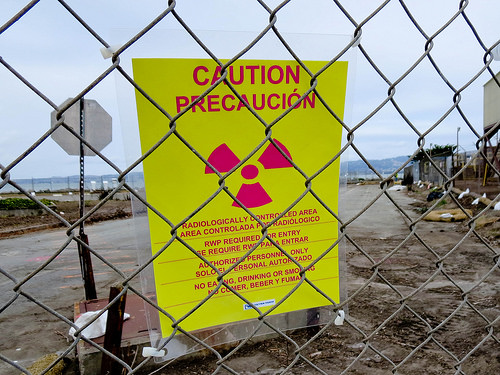Every place on Earth has at least a little radioactivity. It is found in bodies, food (not just in industrially irradiated food), the ground, and in many consumer products. The sun and outer space are sources of radiation. Radioactive materials prevalent in nature, such as those present in soils and rock formations and in the water that comes into contact with them, are called naturally occurring radioactive materials, or NORM. NORM typically does not present a problem to human health or the environment, as the radiation levels are very small, and there is generally not an exposure pathway. However, NORM can become concentrated as the result of certain human activities that also expose people and the environment to radiation hazards. Over time, this collection of individual concentrations/exposures has come to be regarded as part of a single, larger, and more complex problem—radiation contamination—referred to as TENORM (tee-norm).
Audit, Compliance and Risk Blog
Tags: Audit Standards, Health & Safety, Environmental risks, Environmental, EHS
The first significant outbreak of the mosquito-borne zika virus in the Americas was announced in Brazil in May 2015. Public health officials in the United States began to prepare responses, and have accelerated efforts in reaction to reports that the virus is spreading into U.S. territories, beginning with Puerto Rico and Florida and expanding northward. Late in April, the Occupational Safety and Health Administration (OSHA) and the National Institute for Occupational Safety and Health (NIOSH) entered the fray, by issuing joint “Interim Guidance for Protecting Workers from Occupational Exposure to Zika Virus.” The rest of this note summarizes that Guidance.
Read MoreTags: Employer Best Practices, Health & Safety, Employee Rights, EHS
The Occupational Safety and Health Administration (OSHA) requires employers to protect their employees against possible exposure to “bloodborne pathogens (BBPs).” OSHA’s Bloodborne Pathogen Standard prescribes protections for workers occupationally exposed to blood or other potentially infectious materials (OPIM). Healthcare workers are the most obvious beneficiaries, but emergency responders and others may also be regularly at risk to these exposures.
Read MoreTags: Employer Best Practices, Health & Safety, OSHA, Employee Rights, Environmental risks, EHS, Hazcom, pharmaceuticals
Can a Hospital Be Both Hygienic and Environmentally Sustainable?
Posted by Jane Dunne on Mon, May 02, 2016
When it comes to hospitals we all expect the highest standard of cleanliness and yet, we want every part of our lives to be more sustainable. Of course, when hospitals are faced with a choice that puts hygiene up against sustainability, hygiene always wins. But I wonder if it’s possible to find ways for both to win?
Read MoreTags: Health & Safety, Environmental risks, Environmental, EHS, EPA, sustainability
The Clean Water Act’s (CWA’s) national water quality purview includes National Pollutant Discharge Elimination system (NPDES) provisions for “stormwater” that may contain pollutants such as oil, industrial contaminants, and sediment. This means run-off of rain or snow melt containing pollutants from manufacturing, processing, or raw material storage areas at an industrial site, that passes through a “conveyance” (such as a storm drain) into waters of the United States. The Environmental Protection Agency (EPA) administers or delegates permit programs covering discharges from the following:
Read MoreTags: Environmental risks, Environmental, EHS, EPA, Hazcom, Stormwater
Oil Companies Must Let Shareholders Vote To Expand Reporting Relevant To Climate Change
Posted by Jon Elliott on Thu, Apr 14, 2016
In recent years, activist investors have sought to expand climate-related reporting by publicly traded companies – directly by pressuring the companies, and indirectly by petitioning the U.S. Securities and Exchange Commission (SEC) and other regulators to require additional reporting in periodic reports on the businesses’ status and prospects, and in annual meeting reports and proxy requests. SEC has been criticized for doing very little in response to these requests, but took potentially important actions on March 23.
Read MoreTags: SEC, EHS, Oil & Gas, directors, directors & officers
The US Occupational Safety and Health Administration (OSHA) regulates thousands of chemicals, through regulatory standards directing employers to reduce worker exposures. At the broadest level, employers must evaluate basic information about every potentially hazardous chemical, and provide information to employees in compliance with OSHA's Hazard Communication Standard (I’ve blogged about changing HCS requirements here, and here). OSHA’s Air Contaminants Standard provides ambient workplace air limits for hundreds of listed contaminants. OSHA also provides more tailored requirements for classes of chemicals (such as flammables), and for types of activities that pose chemical hazards (such as welding). For a small number of especially hazardous chemicals, OSHA provides a detailed standard applicable to a single chemical—examples include asbestos, benzene, and lead. On March 25, 2016, OSHA established another single-chemical standard, for respirable crystalline silica (29 CFR section 1910.1053). Most affected employers must comply by June 23, 2018; a few provisions are phased in later, and construction employers must meet most requirements by June 23, 2017.
Read MoreTags: Health & Safety, OSHA, EHS, Hazcom
Emissions in the Shipping Industry: Who Is Steering the Ship?
Posted by Jane Dunne on Tue, Apr 05, 2016
You might ask how it is possible that there is no direct mention of the shipping industry in the Paris Agreement at COP21. Many people wonder just how much air pollution is created by the shipping industry and who is working to improve this mysterious source of greenhouse gas emissions?
Read MoreTags: EHS, Greenhouse Gas, ghg, Hazcom
DOT Converts Nearly 100 Variances Into Regulatory Options For Hazmat Shipping
Posted by Jon Elliott on Tue, Mar 29, 2016
Federal hazardous materials transportation laws assign the Department of Transportation’s (DOT’s) Pipeline and Hazardous Materials Safety Administration (PHMSA) general authority to designate hazardous materials and prescribe regulations for the “safe transportation of hazardous materials in intrastate, interstate, and foreign commerce.” PHMSA also prescribes criteria for handling hazardous materials, including training of personnel, inspections, and standards for operating and monitoring equipment.
These laws also authorize PHMSA and other DOT units to issue "special permits" that allow variances from federal requirements for up to two years. These special permits may be renewed for up to two years each time (and up to four years for variances from transport routing requirements). In 2012 “MAP-21” (Moving Ahead for Progress in the 21st Century Act) directed PHMSA to review special permits that had been in place for at least 10 years, and to adopt regulatory revisions by October 1, 2015. PHMSA was to apply the following factors to determine the suitability for adopting a special permit into its hazardous materials regulations (HMR):
Tags: Health & Safety, EHS, Hazcom, Transportation
Even if your organization is not required to do so, you should consider the benefits or being prepared to conduct emergency responses and evacuations. Well-developed emergency plans and proper employee training (so employees understand their roles and responsibilities) likely will result in fewer and less severe employee injuries and less structural damage to the facility during emergencies. A poorly prepared plan, on the other hand, likely will lead to a disorganized evacuation or emergency response, exacerbating confusion, injury, and property damage.
Which Employers Require An EAP?
The following OSHA Standards require you to prepare an EAP as part of your compliance with their requirements:
Read MoreTags: Employer Best Practices, Health & Safety, OSHA, EHS, EPA, Hazcom, PSMS, EAP










